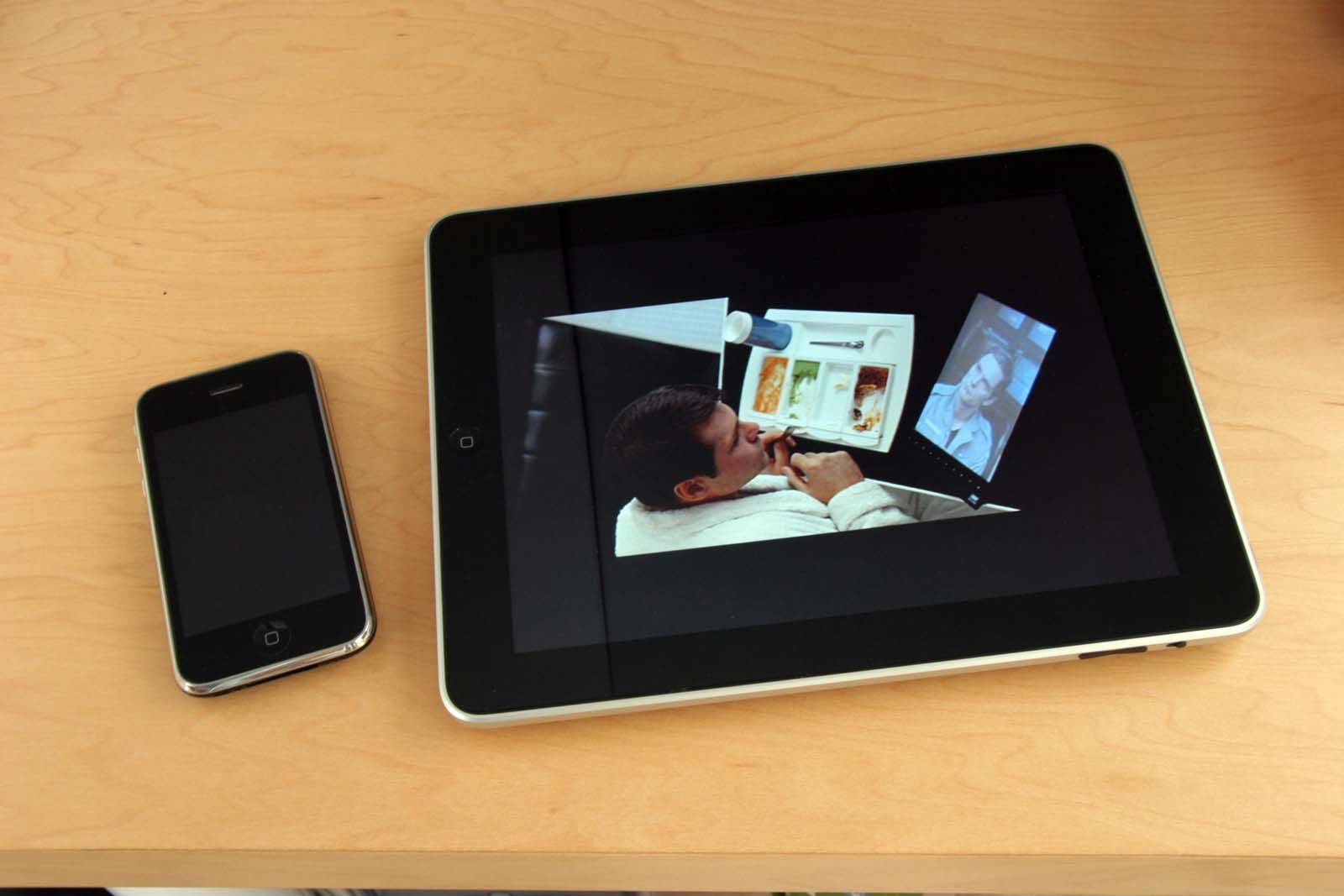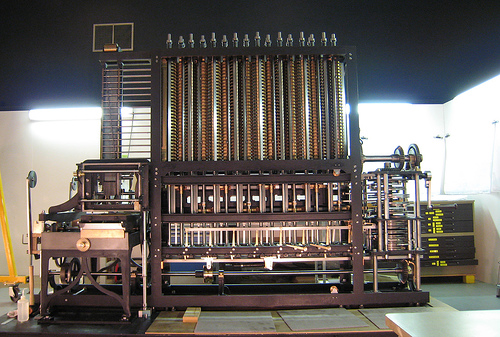It looks like you're using an Ad Blocker.
Please white-list or disable AboveTopSecret.com in your ad-blocking tool.
Thank you.
Some features of ATS will be disabled while you continue to use an ad-blocker.
share:
originally posted by: Dr1Akula
Btw I can read ancient Greek too (no need to deride), the mechanism was a sophisticated astronomical clock, (and not an astrology tool as some believe, the zodiacs are used to form the ''virtual'' sky map) why couldn't a machine like that, be also useful in navigation, since it was found on a ship?
I believe it was a multipurpose analog computer clock, it even calculated the timing of the Olympic Games among other calendar events.
Not a clock. More like a calendar of astronomical events.
The device could not move it's gears on its own, so it could not tick off the time, so it is useless for navigation.
Harte
originally posted by: jadedANDcynical
This device is one of the few genuine OOPARTs that even mainstream scientists can agree does not fit with what is known about the technology of the time im which it existed.
Whatever its purpose, nothing like it would appear for another 1,000 years; it's truly an object out of time.
I'm not sure what you are basing that on. It is of course a wonderful thing, but there is nothing about it which challenges the technology of the time - what is it that makes you think that? So many people seem to think it was some kind of ancient computer, it's nothing of the sort.
The fact 'nothing like it would appear for another 1,000 years' is also dubious, we in the 21st century aren't aware of another example, that's quite a different thing.
originally posted by: Dr1Akula
Btw I can read ancient Greek too (no need to deride), the mechanism was a sophisticated astronomical clock, (and not an astrology tool as some believe, the zodiacs are used to form the ''virtual'' sky map) why couldn't a machine like that, be also useful in navigation, since it was found on a ship?
I believe it was a multipurpose analog computer clock, it even calculated the timing of the Olympic Games among other calendar events.
It was found on a ship as it was probably being transported. The machine could not keep time and would be useless as a marine chronometer,
I don't think you fully understand the principle of a marine chronometer
Marine chronometer
To determine a position on the Earth's surface, it is necessary and sufficient to know the latitude, longitude, and altitude. Altitude considerations can, of course, be ignored for vessels operating at sea level. Until the mid-1750s, accurate navigation at sea out of sight of land was an unsolved problem due to the difficulty in calculating longitude. Navigators could determine their latitude by measuring the sun's angle at noon (i.e., when it reached its highest point in the sky, or culmination) or, in the Northern Hemisphere, to measure the angle of Polaris (the North Star) from the horizon (usually during twilight). To find their longitude, however, they needed a time standard that would work aboard a ship. Observation of regular celestial motions, such as Galileo's method based on observing Jupiter's natural satellites, was usually not possible at sea due to the ship's motion. The Lunar Distance Method, initially proposed by Johannes Werner in 1514, was developed in parallel with the marine chronometer.
The Dutch scientist Gemma Frisius was the first to propose the use of a chronometer to determine longitude in 1530. The purpose of a chronometer is to measure accurately the time of a known fixed location, for example Greenwich Mean Time (GMT). This is particularly important for navigation. Knowing GMT at local noon allows a navigator to use the time difference between the ship's position and the Greenwich Meridian to determine the ship's longitude.
a reply to: uncommitted
I don't think it was a computer, though it does appear to be able to calculate a number of celestial relationships based upon the knowledge of the time.
I am referrng to the actual mechanism and precision of the parts themselves and the fact that nothing, that is currently known about, comes close to the level of complexity of the device.
The steam driven devices referenced by another poster are almost on the same level, but even comparing those to the mechanism shows a degree of sophisticated mechanical engineering not displayed by those other devices. And, as ponted out, those were decades later.
The best thing we can hope for is for other similarly complicated devices to be found with which comparisons can be made.
I don't think it was a computer, though it does appear to be able to calculate a number of celestial relationships based upon the knowledge of the time.
I am referrng to the actual mechanism and precision of the parts themselves and the fact that nothing, that is currently known about, comes close to the level of complexity of the device.
The steam driven devices referenced by another poster are almost on the same level, but even comparing those to the mechanism shows a degree of sophisticated mechanical engineering not displayed by those other devices. And, as ponted out, those were decades later.
The best thing we can hope for is for other similarly complicated devices to be found with which comparisons can be made.
I suppose people would have to look at what Pythagoras was doing about 500 years prior to the new estimated age of this device. Greeks of that time
were probably one of the most scientifically advanced societies aroud the Mediterranean. They knew how to calculate ratios, if not outright
arithmetically, they also had geometric proofs and could use measures of such to determine necessary ratios. (Knowing how they work things out, it's
likely they knew period intervals from older recorded calendars, and developed something like a proof using conic sections to determine the necessary
gear ratios. Not quite calculus, but damn close. Yet it's not something I'd put beyond them, this is the kind of stuff their best scholars were
quite into.)
So this device dates closer to the time of Hero(n) of Alexandria, rather than to the era of Archimedes. If somebody could figure out whom Heron was an apprentice or scholar of, that might lead closer to this device's origins. You'd also think there would be some documentation lingering around indicative of fine machine tooling of brass/bronze by Romans or Greeks of that era.
The missing link is in knowledge of machining. (The mathematics is already solid there.) Makes you wonder if the early clockworks during the Renaissance in Europe had their roots in much older Greek/Roman documents and artifacts.
So this device dates closer to the time of Hero(n) of Alexandria, rather than to the era of Archimedes. If somebody could figure out whom Heron was an apprentice or scholar of, that might lead closer to this device's origins. You'd also think there would be some documentation lingering around indicative of fine machine tooling of brass/bronze by Romans or Greeks of that era.
The missing link is in knowledge of machining. (The mathematics is already solid there.) Makes you wonder if the early clockworks during the Renaissance in Europe had their roots in much older Greek/Roman documents and artifacts.
originally posted by: Hanslune
originally posted by: Klassified
a reply to: Hanslune
Probably what scientists will be saying about us 2000 years from now. Lol!
Yes far in the future some one will be claiming that we really had anti-gravity before it was invented in 2243 AD, teleportation, etc because they are spoken of in the writing of the times.
LOL yeah especially when they Dig Up a 1929 Magazine called Amazing Stories ! and believe that Man went in Space in 1929....

Science Fiction is grand isn't ! Like Gadgets of Star Trek, Visionary's in Jules Vern's Books, Arthur C Clarke Books turning to reality for Real... you know Bluetooth, Cell Phones, Medical Equipment, Computer Voice Recognition Control, Computer On! , Invisible Metal,( yes they are playing with it ) Satellites, NewsPad aka I Pad , Android Tablets
Let alone real Planned Projects with Prototypes then were Cancelled.. During the Jet and Space Race...
But the Antikythera Mechanism to Some.. is like finding a Smart Phone in a world of Dial Up Phones ..
as I remember in a Documentary Video some Researchers were Trying to Figure Out why One Particular Gear had only 53 and Not 54 teeth and what they discovered on Antikythera Mechanism .. There was a certain Buffer aka a Slider Gear to make the Antikythera Mechanism Function Right .. in Certain times within a Certain Months ... Something Like Setting a Clock Back or Forward to Adjust the time frame and Lunar Eclipse? Sorry Wish i could find that documentary, its on youtube anyways
I think I found it !
The Ancient Greek Computer: The Antikythera Mechanism (720p)
www.youtube.com...
See 18:00 mark on through or 19:05 Mark
edit on 29-11-2014 by Wolfenz because: (no reason given)
originally posted by: Wolfenz
But the Antikythera Mechanism to Some.. is like finding a Smart Phone in a world of Dial Up Phones ..
Or perhaps finding a touch screen phone in a world of keypad phones?
Innovation always happen at some point. Its nothing magical. Humans are a little impressive that way.
The Antikythera device is also impressive, but at the end of the day its still just math, astronomy and mechanical cogs. The fact that it may be 100 years older than previously thought changes little - it only make it more likely that Archimedes may have played a part in its design.
originally posted by: merka
originally posted by: Wolfenz
But the Antikythera Mechanism to Some.. is like finding a Smart Phone in a world of Dial Up Phones ..
Or perhaps finding a touch screen phone in a world of keypad phones?
Innovation always happen at some point. Its nothing magical. Humans are a little impressive that way.
The Antikythera device is also impressive, but at the end of the day its still just math, astronomy and mechanical cogs. The fact that it may be 100 years older than previously thought changes little - it only make it more likely that Archimedes may have played a part in its design.
But the Antikythera Mechanism to Some.. is like finding a Smart Phone in a world of Dial Up Phones ..
Or perhaps finding a touch screen phone in a world of keypad phones?
That what I Meant
 files.abovetopsecret.com..." class="picImg">
files.abovetopsecret.com..." class="picImg">The Obsolete Payphone

The Irony of it ! Watching a 1968 Space opera Movie with a 1968 Concept of a NewsPad like in the Book / 2001 Space Odyssey on a Actual Real Deal I PAD as Arthur C Clarkes Vision Beame Real..

Just Imagine If Charles Babbage learned the Discovery of the Antikythera Mechanism during his Time ..



Tho as Some Scholars claim that the Geared Mechanical Wheel was Brought into the Europe from The Moor's and Shot off from there to the making of of the Mechanical geared Clock right from making the Odometer from Archimedes..
I wonder Here Archimedes go that Idea From ??
Perhaps ! .............. A Art Imitates Life Moment...
This Insect Has The Only Mechanical Gears Ever Found in Nature
The small hopping insect Issus coleoptratus uses toothed gears on its joints to precisely synchronize the kicks of its hind legs as it jumps forward
By Joseph Stromberg
smithsonian.com
September 12, 2013
Read more: www.smithsonianmag.com...
Give the gift of Smithsonian magazine for only $12! http://(link tracking not allowed)/1cGUiGv
Follow us: @SmithsonianMag on Twitter
a plant-hopping insect found in gardens across Europe - has hind-leg joints with curved cog-like strips of opposing 'teeth' that intermesh, rotating like mechanical gears to synchronise the animal's legs when it launches into a jump. Read more at: phys.org...

a reply to: Hanslune
All I am trying to say is that the machine’s ''computing power'', would have enabled its user to generate astronomical tables with which navigators could calculate their position. I am not suggesting it worked like a marine chronometer or that it was used exclusively for navigation, but it could help with the way sailors where navigating using the stars at that time.
I could be wrong, but I believe it was used for various calculating applications including distance and position.
All I am trying to say is that the machine’s ''computing power'', would have enabled its user to generate astronomical tables with which navigators could calculate their position. I am not suggesting it worked like a marine chronometer or that it was used exclusively for navigation, but it could help with the way sailors where navigating using the stars at that time.
I could be wrong, but I believe it was used for various calculating applications including distance and position.
a reply to: Dr1Akula
Planets are different though. They move around. The device could sort of predict that movement.
Stars don't move in the sky (except for the regular apparent motion caused by Earth's rotation). That's why they were and are useful for navigation. Ancient celestial navigation was rudimentary and there was little necessity to determine longitude when navigating the Aegean and Mediterranean. Navigators memorized the position of stars, they didn't need a calculator to tell them where the stars would be. Want to go north? Head for Polaris.
I am not suggesting it worked like a marine chronometer or that it was used exclusively for navigation, but it could help with the way sailors where navigating using the stars at that time
Planets are different though. They move around. The device could sort of predict that movement.
edit on 11/29/2014 by Phage because: (no reason
given)
originally posted by: Dr1Akula
a reply to: Hanslune
All I am trying to say is that the machine’s ''computing power'', would have enabled its user to generate astronomical tables with which navigators could calculate their position. I am not suggesting it worked like a marine chronometer or that it was used exclusively for navigation, but it could help with the way sailors where navigating using the stars at that time.
I could be wrong, but I believe it was used for various calculating applications including distance and position.
I understand you position better now thanks.
The problem is one of longitude at sea: That was not solved until marine chronometers were created. While longitude could be determined on land on a moving ship it was very difficult and various systems were tried Halley's, Mayer's and Galileo the most successful of these was the lunar method which required a lot of calculation (about three hours) there is no indication that the device could assist in any way with this or the other methods.
It had no (AFAIK) calculating, sighting or astronomical measuring capability.
A poster on ATS called phage has a high level of navigational knowledge I would recommend contacting him.
a reply to: jadedANDcynical
As somebody with a degree in Anthropology/Archaeology this is an incredible discovery. The device itself is quite interesting. I do hope to learn more about its makers and purpose!
As somebody with a degree in Anthropology/Archaeology this is an incredible discovery. The device itself is quite interesting. I do hope to learn more about its makers and purpose!
originally posted by: Dr1Akula
a reply to: Hanslune
All I am trying to say is that the machine’s ''computing power'', would have enabled its user to generate astronomical tables with which navigators could calculate their position. I am not suggesting it worked like a marine chronometer or that it was used exclusively for navigation, but it could help with the way sailors where navigating using the stars at that time.
I could be wrong, but I believe it was used for various calculating applications including distance and position.
If the device had the moon and planets adjusted to all their apparent position on the device. From the observers point of view. Then at the time of completion, their would only be one site on the earths surface that would correspond to all the angles that were put in. Wouldn't that be the position that they were at, at that particular time. Just the one position on the Earths surface. Like angle of the moon is 20 degrees above the horizon, Jupiter 50 degrees which only occurs at sector five on the chart, once in the next eighteen years? maybe they were a lot smarter than we think. After all the cosmos is a big clock, it just happens that we live inside said clock.
a reply to: anonentity
dlib.nyu.edu...
And it didn't work very well because the model which it used for the Solar System was wrong.
It tells you when you are on one location of the planet? It tells you you're home?
Then at the time of completion, their would only be one site on the earths surface that would correspond to all the angles that were put in.
You still need to know the time of day but the mechanism had nowhere near the accuracy you may think it did.
Wouldn't that be the position that they were at, at that particular time. Just the one position on the Earths surface. Like angle of the moon is 20 degrees above the horizon, Jupiter 50 degrees which only occurs at sector five on the chart, once in the next eighteen years?
We compare the positions of Mars, as reconstructed by NASA with the Mechanism’s predictions over the middle seven retrogrades of Mars in the 1st Century BC—a period of about 13 years.86 Serious error spikes can be seen, amounting to nearly 38°—more than a zodiac sign—at the retrogrades. The deferent and epicycle theories, on which the mechanisms depended, might be regarded as an adequate first-order approximation but were completely inadequate for accurate prediction at the retrogrades, particularly for Mars.
In short, the Antikythera Mechanism was a machine designed to predict celestial phenomena according to the sophisticated astronomical theories current in its day, the the sole witness to a lost history of brilliant engineering, a conception of pure genius, one of the great wonders of the ancient world—but it didn’t really work very well!
dlib.nyu.edu...
And it didn't work very well because the model which it used for the Solar System was wrong.
And they had no idea how the clock works.
After all the cosmos is a big clock, it just happens that we live inside said clock.
edit on 11/29/2014 by Phage because: (no reason given)
The object itself is not a clock, but could it be just part of a larger mechanism? Maybe it could be used for navigation or it could be used just as a
calendar, in any case today we look at astrology as a boogey way to predict future of individuals born in the same period, but in the ancient times
the sky WAS the clock, so precision comparisons with today's clocks aside, it would have been regarded as an important artifact regarding how it was
used.
I thought this device was to predict the movement and position of Venus , lunar phases, lunar eclipses, and the positions of the sun and moon for
years to follow. Later it was also found that the device could predict the motion of the planets, and cast horoscopes for planning future festivals
and events in the ancient world.
Inside different caves from around the world there are prehistoric paintings of society with graphic details of an unexpected nature—such as people wearing shirts, pants, boots, and hats.
www.theepochtimes.com...
Inside different caves from around the world there are prehistoric paintings of society with graphic details of an unexpected nature—such as people wearing shirts, pants, boots, and hats.
www.theepochtimes.com...
originally posted by: douglas5
Inside different caves from around the world there are prehistoric paintings of society with graphic details of an unexpected nature—such as people wearing shirts, pants, boots, and hats.
www.theepochtimes.com...
Those five things are not remotely mysterious. You might want to start a new thread if you want to discuss them in detail.
a reply to: jadedANDcynical
Here's the latest from "Archaeology":
Here's the latest from "Archaeology":
New Dates Calculated for Greece’s Antikythera Mechanism
The highly complex machine may have been based on Babylonian arithmetical methods, and not Greek trigonometry, which didn’t exist in 205 B.C. Link
new topics
-
God's Righteousness is Greater than Our Wrath
Religion, Faith, And Theology: 4 hours ago -
Electrical tricks for saving money
Education and Media: 7 hours ago -
VP's Secret Service agent brawls with other agents at Andrews
Mainstream News: 8 hours ago -
Sunak spinning the sickness figures
Other Current Events: 9 hours ago -
Nearly 70% Of Americans Want Talks To End War In Ukraine
Political Issues: 9 hours ago -
Late Night with the Devil - a really good unusual modern horror film.
Movies: 11 hours ago
top topics
-
VP's Secret Service agent brawls with other agents at Andrews
Mainstream News: 8 hours ago, 9 flags -
Cats Used as Live Bait to Train Ferocious Pitbulls in Illegal NYC Dogfighting
Social Issues and Civil Unrest: 12 hours ago, 8 flags -
Electrical tricks for saving money
Education and Media: 7 hours ago, 4 flags -
HORRIBLE !! Russian Soldier Drinking Own Urine To Survive In Battle
World War Three: 16 hours ago, 3 flags -
Nearly 70% Of Americans Want Talks To End War In Ukraine
Political Issues: 9 hours ago, 3 flags -
Sunak spinning the sickness figures
Other Current Events: 9 hours ago, 3 flags -
Late Night with the Devil - a really good unusual modern horror film.
Movies: 11 hours ago, 2 flags -
The Good News According to Jesus - Episode 1
Religion, Faith, And Theology: 14 hours ago, 1 flags -
God's Righteousness is Greater than Our Wrath
Religion, Faith, And Theology: 4 hours ago, 0 flags
active topics
-
God's Righteousness is Greater than Our Wrath
Religion, Faith, And Theology • 1 • : andy06shake -
SETI chief says US has no evidence for alien technology. 'And we never have'
Aliens and UFOs • 45 • : andy06shake -
Sunak spinning the sickness figures
Other Current Events • 7 • : xWorldxGonexMadx -
HORRIBLE !! Russian Soldier Drinking Own Urine To Survive In Battle
World War Three • 33 • : Degradation33 -
How ageing is" immune deficiency"
Medical Issues & Conspiracies • 34 • : angelchemuel -
Nearly 70% Of Americans Want Talks To End War In Ukraine
Political Issues • 13 • : Freeborn -
Mood Music Part VI
Music • 3101 • : ThatSmellsStrange -
VP's Secret Service agent brawls with other agents at Andrews
Mainstream News • 41 • : ThatSmellsStrange -
New whistleblower Jason Sands speaks on Twitter Spaces last night.
Aliens and UFOs • 55 • : baablacksheep1 -
Cats Used as Live Bait to Train Ferocious Pitbulls in Illegal NYC Dogfighting
Social Issues and Civil Unrest • 20 • : Asher47
